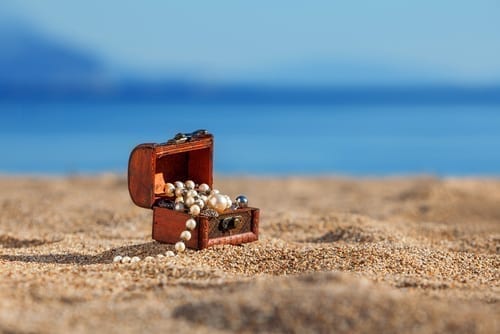In this week’s parsha, Parshas Tetzaveh, the Torah outlines – in great and precise detail – the bigdei kehunah, the Priestly garments to be worn by Aharon, the Kohen Gadol, and his sons, the Kohanei Hedyot, when they served in the Mishkan, the Sanctuary. All kohanim wore four identical garments: a tunic, hat, sash and short pants under the tunic, while the Kohen Gadol wore an additional four garments: the breastplate, apron, turquoise-blue robe and golden head plate, engraved with the words “Holy to Hashem”.
Unique to the garments of the Kohen Gadol were beautiful, precious stones, known as the twelve Filling Stones, which adorned the חשן (the breastplate); as well as the two Shoham Stones, which rested upon the shoulder straps of the אפוד , the apron. The
Torah tells us that upon the Shoham stones, the names of the tribes were engraved: Six of their names on one stone and the names of the remaining six on the second stone, according to their births (Shemos 28:9-10). Therefore, upon one stone was engraved: Reuven, Shimon,
Levi, Yehuda, Dan, Naphtali; and upon the other stone was engraved: Gad, Asher, Yissachar, Zevulun, Yosef and Binyamin.
Why did the Kohen Gadol carry the names of the Tribes of Israel upon his shoulder straps? “Stones of remembrance for the Bnei Yisrael.” Rashi notes – “That Hashem will see before Him the (names of the) Tribes written and He will remember their righteousness (28:12 w/ Rashi).
And what of the twelve Filling Stones, which adorned the breastplate? Upon those twelve were engraved the names of the tribes, in order of their birth, one tribe per stone (28:21 w/ Rashi).
If the names of the Tribes were engraved upon the stones of the shoulder straps, what do we learn from the fact that they also needed to be engraved upon the twelve breast-plate stones? Furthermore, what lesson can we derive from the command to engrave the Shoham stones with
six names per stone, while the Filling Stones were engraved with one name per stone?
Perhaps the Torah is teaching us a profound lesson of what it means to be a member of this glorious nation, Am Yisrael, the nation of Israel.
From the אבני מילואים , the twelve Filling Stones, engraved with one name per stone, we learn that each person is an individual. Each person has their own strengths, weaknesses, character traits, talents, contributions, thoughts, emotions and ideas. The Sages teach: שאין דעתם דומה
זה לזה ואין פרצופיהן דומים זה לזה – For their minds are not similar to one another, and their faces are not similar to one another (Brachos 58a).
Each Tribal name is engraved upon its own unique stone, representing the unique talents, capabilities and persona of each individual in Israel. What would our people be if Moshe Rabbeinu was the same as Shumel Ha’Navi, if Rashi was the same as the Rambam, if the Chafetz Chaim was the same as R’ Chaim Soloveitchik of Brisk, if R’ Moshe Feinstein was the same as R’ Yaakov Kamenentzky, of blessed memory?
We are all unique and contribute in our own way to Klal Yisrael, and this uniqueness is represented in the Filling Stones, which rested opposite the heart of the Kohen Gadol. And yet if we remain unto ourselves, if we do not know that our power and righteousness comes from banding together, if we think we can survive each man to himself… Woe unto our nation. For this, we need the Shoham stones, engraved with six tribal names per stone, for the names grouped together represent the unity, the love, the achdus, the togetherness of our nation.
While we are unique and alone, we are the same and together.
The Megilla describes how Haman wanted to kill all of us.
וְנִשְׁלוֹחַ סְפָרִים בְּיַד הָרָצִים, אֶל-כָּל-מְדִינוֹת הַמֶּלֶ -ְ-לְהַשְׁמִיד לַהֲרֹג וּלְאַבֵּד אֶת-כָּל-הַיְּהוּדִים מִנַּעַר וְעַד-זָקֵן
טַף וְנָשִׁים בְּיוֹם אֶחָד, בִּשְׁלוֹשָׁה עָשָׂר לְחֹדֶשׁ שְׁנֵים-עָשָׂר הוּא-חֹדֶשׁ אֲדָר – And the letters were sent in the hands of the runners, to every province of the king, to destroy, kill, annihilate all the Jews, from youth to elderly, babies to women, on one day, on the 13th day of the month of Adar… (Esther 3:13).
It was not enough for him to destroy an entire people; he wanted to destroy the individuals that make up our nation: כָּל-הַיְּהוּדִים . Each and every Jew, woman and child, youth and sage, would be killed on that day. Our talents and strengths, our emotions and thoughts, would all be snuffed out at the same moment …
And yet, Mordechai and Esther knew that in order to annul the decree against the individuals we had to come together as one unit, as one nation, as one cohesive group…And so, courageous Esther declared and instructed: Go and gather all the Jews of Shushan – as one
united whole – and fast for me, do not eat and do not drink for three days, night and day, and me and my maidens will fast as well, and like this, I will come to the king… (Esther 4:16).
When we recognize and embrace our individuality and use our unique strengths to serve Hashem, simultaneously appreciating the whole of the nation, and unitingwith them to serve Him, we will certainly merit that our names will always be a remembrance before Him, – וְיִזְכּוֹר צִדְקָתָם
and He will recall our righteousness and save us.
לַיְּהוּדִים, הָיְתָה אוֹרָה וְשִׂמְחָה, וְשָׂשֹׂן, וִיקָר – And for the Jews, as individuals, and for the nation as one whole, there was light and joy, gladness and honor (Esther 8:16). May we so merit it speedily and in our days!





